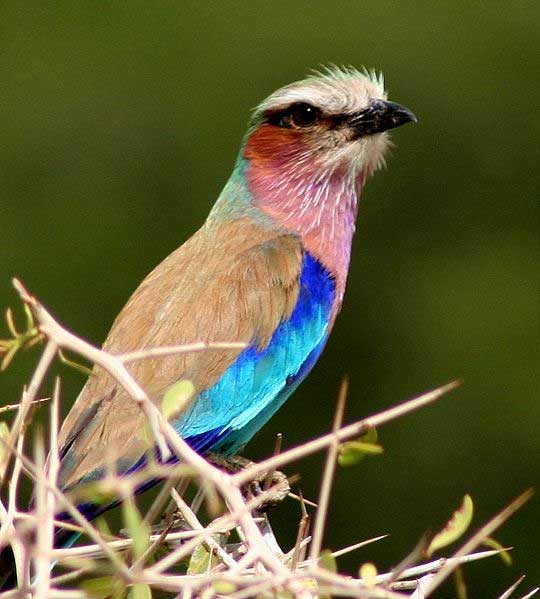Coracias caudatus (*) Cladus: Eukaryota Name Coracias caudatus Linnaeus, 1766 Synonyms * Coracias caudata Reference Systema Naturae ed.12 p.160 Vernacular names The Lilac-breasted Roller, Coracias caudatus, is a member of the roller family of birds. It is widely distributed in sub-Saharan Africa and the southern Arabian Peninsula, preferring open woodland and savanna; it is largely absent from treeless places. Usually found alone or in pairs, it perches conspicuously at the tops of trees, poles or other high vantage points from where it can spot insects, lizards, scorpions, snails, small birds and rodents moving about at ground level. Nesting takes place in a natural hole in a tree where a clutch of 2–4 eggs is laid, and incubated by both parents, who are extremely aggressive in defence of their nest, taking on raptors and other birds. During the breeding season the male will rise to great heights, descending in swoops and dives, while uttering harsh, discordant cries. The sexes are alike in coloration. Juveniles do not have the long tail feathers that adults do. Source: Wikipedia, Wikispecies: All text is available under the terms of the GNU Free Documentation License |
|

